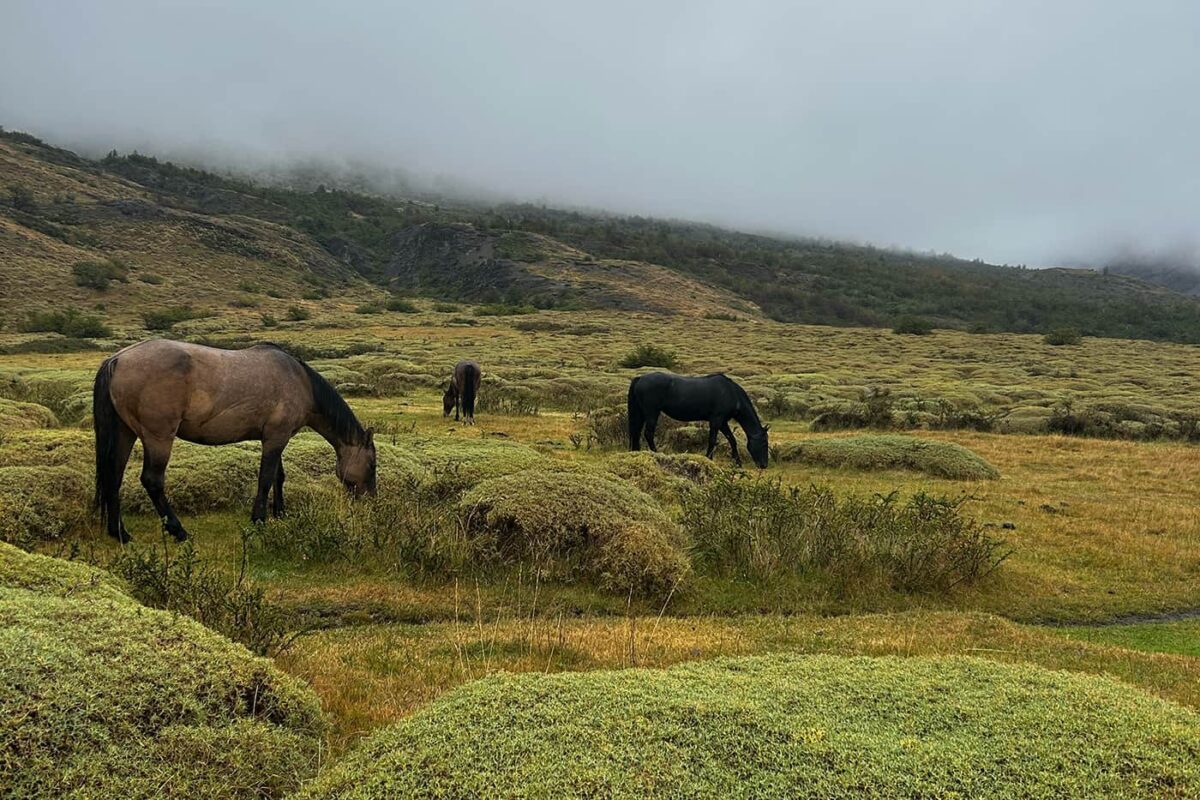On the first day of the Patagonia O-Circuit, you begin at Central, where you’ll be dropped off by bus from the nearest town, Puerto Natales. From here, you’ll be able to see your first glance at the famous Torres as you meander through the golden plains. Keep an eye out for cows and guanacos, which are plenty in this section!
Stage one is unique in its desert environment, so make sure to enjoy your time here before the trail begins to ascend into glacial trekking.
After a cozy night camping in Seron, you’ll want to throw on your hat and gloves because you’ll head into glacier land! The day begins with a steep 300m climb to see turquoise lakes and the beginnings of the mountains you’ll tackle over the next few days. From here, you will descend into a valley that will be shimmering with rainbows if you’re lucky. Be wary, the wind really picks up here, so bring trekking poles for stability.
The day continues into wetlands, where you’ll balance on boardwalks to get to camp. Planet Dickson is the last stop for a mini-market, hot water, and trash for the next two days, so it’s important to take advantage of the amenities! And keep an eye out for hungry horses wandering through your campsite.
Stage three really embodies a lot of Patagonian trekking: it’s full of squelching mud. If you had an idea of keeping your shoes clean or dry on this trek, forget it! Here, you’ll squish through forest floors and over rivers at a mellow pace for most of the day.
But in the last two kilometers of the third stage, you’ll begin the glacier hiking. Here, the mud is swapped for rocky, snowy ground and the wind will begin to bite. As you near camp, you’ll climb a ridge and see the glacier that’ll keep you cool at night: Glaciar los Perros. Camp Los Perros has no hot water or trash, so you need to pack out what you bring in from here. Try and have a low-waste day, because in the morning you’ll be embarking on the largest pass of the trek and don’t want to carry unnecessary weight!
Stage four of the Patagonia O-Circuit is a special kind of beast. For the first few hours, you will climb roughly 1000m over John Gardner Pass. In a direct ascent, you’ll pop through the tree line within the first 30 minutes and begin switchbacking your way up the mountain range. Check with rangers the night before you climb for visibility reports. In March, the trail was mostly obscured by snow flurries and the winds reached gusts of 80km/h.
Once you reach the pass, you’ll be rewarded with views of Glacier Grey, a magnificent glacier that fills the crevasses of the park. Once you spend a few minutes admiring the view, it will be time to descend down, down, down. After about an hour and a half of muddy sliding down the mountain, you’ll arrive at the Camp Paso check-in station to make sure you made it off the mountain safely. From here it’s another 5 hours of descent.
One of the special elements of this section is the suspension bridges. You’ll cross over three bridges on your approach to Camp Grey, and all of them offer views over stunning waterfalls.
Once you arrive at Camp Grey, you’ll now be overlapping with the W-Trek. The W is a four-day version of the trek through the park and traverses the south section of the loop. The trail will become busier on these sections, so make sure to have your campsites booked far in advance!




















